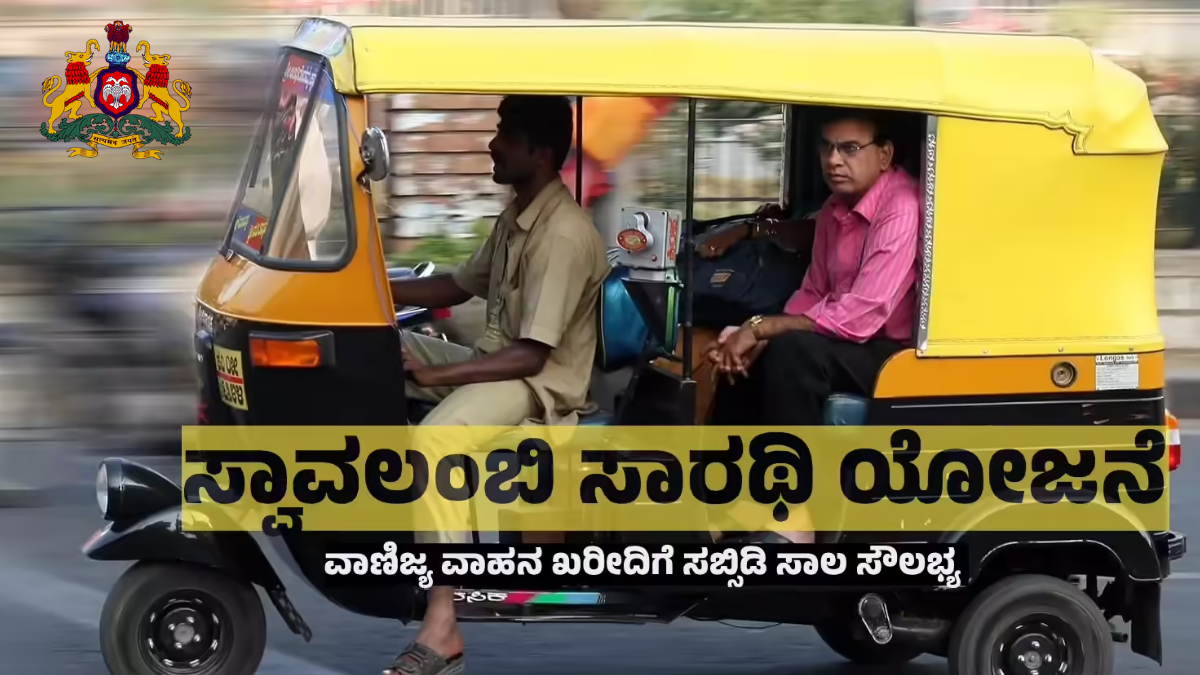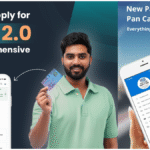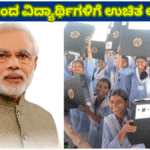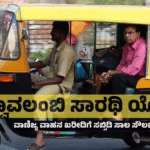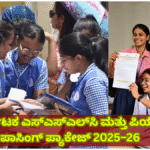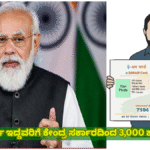Introduction
Employment and economic self-reliance are cornerstones of social progress. Recognizing the importance of empowering marginalized communities, the Government of Karnataka has introduced a variety of welfare initiatives that promote entrepreneurship, financial inclusion, and sustainable livelihoods. One of the most impactful among them is the Swavalambi Sarathi Scheme, a program designed to help unemployed youth from backward and minority communities purchase commercial vehicles and become self-employed.
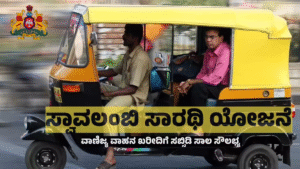
Through a combination of direct subsidy from the state government and bank-financed loans, the Swavalambi Sarathi scheme provides a practical route for aspiring entrepreneurs to begin their journey in the transport and logistics sector. This article presents a comprehensive understanding of the scheme—its objectives, benefits, eligibility rules, financial structure, and detailed application process—so that potential beneficiaries can make informed decisions.
Objectives of the Scheme
The Swavalambi Sarathi (Self-Reliant Driver) scheme aims to create long-term employment opportunities by supporting economically weaker sections of society in owning and operating vehicles for commercial purposes. The primary goals include:
- Encouraging Self-Employment
By helping beneficiaries acquire vehicles, the scheme allows them to earn a steady income through taxi, goods transport, or passenger services. - Socio-Economic Empowerment
Targeting youth from Backward Classes, Scheduled Castes, Scheduled Tribes, and Minority groups, the scheme addresses social inequalities and improves livelihood opportunities for communities historically under-represented in business and trade. - Boosting Rural and Urban Transport Infrastructure
The initiative also strengthens Karnataka’s transport network by increasing the number of locally operated taxis, autos, and goods carriers, improving connectivity across both urban and rural areas. - Encouraging Responsible Entrepreneurship
By combining subsidy with repayable bank loans, the scheme fosters financial discipline and accountability among beneficiaries while minimizing misuse of public funds.
Core Features and Highlights
| Feature | Description |
|---|---|
| Implementing Agency | Various Development Corporations under the Department of Backward Classes Welfare and Minorities Welfare, Government of Karnataka. |
| Target Group | Unemployed youth belonging to backward classes, minorities, SC/ST categories. |
| Nature of Support | Government subsidy combined with a term loan from a nationalized or cooperative bank. |
| Subsidy Amount | 50% of vehicle cost or up to ₹3,00,000 (whichever is lower). For SC/ST categories, up to 75% or ₹4,00,000. |
| Loan Component | Remaining cost covered by bank loan based on applicant’s credit assessment. |
| Eligible Vehicles | Commercial four-wheelers (Taxi/Cab/Light Goods Vehicle) and passenger three-wheelers (Auto-rickshaw). |
| Application Mode | Online through the Seva Sindhu portal or via district-level development corporations. |
| Priority Groups | Women, transgender persons, and differently-abled applicants are given preference. |
Why the Scheme Matters
The Swavalambi Sarathi initiative is more than a financial subsidy—it is a social transformation mechanism. It provides those with driving skills but no capital the means to start a livelihood. For thousands of youth, the program represents:
- A stepping stone from unemployment to self-employment.
- A safety net that reduces dependence on irregular wage work.
- A confidence boost to enter the formal economy and build credit history.
- An inclusive opportunity that integrates women and marginalized genders into the professional driving sector.
In addition, the scheme contributes to the broader goal of Atmanirbhar Bharat (Self-Reliant India) by encouraging small-scale entrepreneurship at the state level.
Eligibility Criteria
To ensure that the benefits reach the intended population, applicants must meet specific eligibility requirements:
- Community Requirement
Applicants should belong to recognized backward classes such as Category 3B, or to SC/ST/Minority groups as defined by the state government. - Domicile Requirement
The applicant must be a permanent resident of Karnataka, supported by valid residential proof such as Aadhaar, ration card, or voter ID. - Age Limit
The usual age range is 21 to 45 years, although some variants extend eligibility up to 55 years depending on category. - Annual Income Limit
- Rural families: income should not exceed ₹98,000 per year.
- Urban families: income should not exceed ₹1,20,000 per year.
(In some updates, this limit may be revised to ₹4,50,000 for certain categories.)
- Driving License
The applicant must possess a valid LMV (Light Motor Vehicle) or relevant driving license before applying. - No Prior Vehicle Subsidy
Applicants or their family members must not have received government vehicle assistance under any similar scheme. - Single Beneficiary per Family
Only one person from a family can benefit from the program. - Bank Account and Aadhaar Linking
A functional bank account linked with Aadhaar is mandatory for Direct Benefit Transfer (DBT) of subsidy. - Vehicle Registration Condition
The vehicle must be registered for commercial use (Yellow Board) and not for private purposes. - Other Restrictions
The vehicle cannot be sold, transferred, or converted into a non-commercial vehicle until the loan is fully repaid.
Financial Structure and Subsidy Pattern
The Swavalambi Sarathi model works on a shared responsibility basis between the government and financial institutions.
1. Subsidy Component
- The government contributes 50% of the total vehicle cost or up to ₹3,00,000, whichever is lower.
- For SC/ST beneficiaries, the subsidy may reach 75% or up to ₹4,00,000, based on category-specific corporation guidelines.
2. Bank Loan Component
- The remaining cost is financed by nationalized or regional rural banks as a term loan.
- The loan tenure, EMI amount, and interest rate follow Reserve Bank of India (RBI) and bank-specific norms.
3. Example Calculation
If a vehicle costs ₹6,00,000:
- Government subsidy (50%) = ₹3,00,000
- Bank loan = ₹3,00,000
The beneficiary repays only the loan amount in installments, while the subsidy portion is a grant that does not require repayment.
Required Documents
Applicants should prepare clear, attested copies of the following documents before applying online:
- Aadhaar Card or Voter ID (Proof of identity)
- Domicile Certificate / Residence Proof
- Caste and Income Certificate (issued by Tahsildar)
- Valid Driving License for LMV or applicable category
- Vehicle quotation from an authorized dealer
- Recent passport-size photograph
- Bank passbook or cancelled cheque (for account verification)
- Self-declaration / Affidavit stating no previous benefit taken
- Loan sanction letter (if available)
- Proof of unemployment (self-declaration)
- Additional documents if demanded by district office
Applicants should ensure all scanned copies are legible and correctly named before uploading to the portal.
Application Procedure
Step 1: Check Eligibility
Before applying, confirm that you meet the community, income, and age criteria, and that your documents are valid.
Step 2: Gather Documents and Vehicle Quotation
Collect all necessary certificates and obtain a quotation for the vehicle you intend to purchase from an authorized dealership.
Step 3: Apply Online
- Visit the official Seva Sindhu portal (https://sevasindhu.karnataka.gov.in) or your district development corporation’s website.
- Navigate to the Swavalambi Sarathi Scheme section.
- Fill in personal information, contact details, vehicle details, and bank information.
- Upload the required documents in PDF/JPEG format.
- Submit the application and note the acknowledgement number for tracking.
Step 4: Verification and Selection
Applications are verified by the District Selection Committee, which usually includes:
- Chief Executive Officer (Zilla Panchayat) – Chairperson
- Lead Bank Manager – Member
- Regional Transport Officer – Member
- District Officer (Backward Classes / Minority Welfare) – Member
- District Manager of the respective Corporation – Secretary
Step 5: Loan Sanction and Subsidy Approval
Once selected, the candidate approaches the partnering bank to finalize the loan. The government subsidy is then approved and transferred to the bank or beneficiary’s account via Direct Benefit Transfer (DBT).
Step 6: Vehicle Purchase and Registration
After receiving the loan and subsidy confirmation, the applicant purchases the vehicle and registers it as a Yellow Board (Commercial) vehicle. Insurance and tax expenses are borne by the beneficiary.
Step 7: Submission of Final Proof
Submit copies of registration certificate, insurance, and vehicle photographs to the district office for record verification.
Step 8: Loan Repayment
Beneficiaries must repay their bank loan in timely EMIs. The vehicle remains under hypothecation until the loan is cleared.
Monitoring and Accountability
- Transparency: All applications and disbursements are handled through digital platforms, minimizing manual intervention.
- Audit: District and state-level audits ensure fair beneficiary selection.
- Vehicle Tagging: Each subsidized vehicle bears a sticker or inscription “Purchased under Government Subsidy – Swavalambi Sarathi Scheme.”
- Restriction on Sale: Until full loan repayment, beneficiaries cannot sell or transfer the vehicle.
- Compliance Checks: Corporations may conduct field inspections to confirm vehicle utilization for commercial purposes.
Key Benefits
- Financial Assistance:
Reduces initial cost barriers for unemployed youth wanting to enter the transport business. - Employment Generation:
Enables creation of thousands of self-employment opportunities in taxi, delivery, and logistics sectors. - Inclusive Development:
Prioritizes economically weaker communities, promoting equitable growth. - Women Empowerment:
Dedicated reservation ensures greater participation of women in self-employment. - Skill Utilization:
Encourages trained drivers to use their skills productively rather than remain under-employed. - Local Economic Impact:
Strengthens local transport facilities, increases last-mile connectivity, and supports rural mobility.
Challenges and Limitations
While the scheme is promising, applicants should remain aware of practical constraints:
- Loan Repayment Burden: Even with subsidy, beneficiaries must handle regular EMIs and vehicle maintenance costs.
- Fuel Price Volatility: Rising petrol or diesel prices can reduce profit margins.
- Market Competition: In urban centers, high competition among taxi operators can affect income stability.
- Documentation Delays: Incomplete paperwork or mismatched details may delay approval.
- Vehicle Maintenance and Insurance: Annual maintenance and insurance renewal costs must be planned carefully.
- Resale Restrictions: Vehicle cannot be sold or converted to private use until all dues are cleared.
Practical Tips for Applicants
- Choose the Right Vehicle: Select a model that balances fuel efficiency and maintenance cost.
- Compare Quotations: Take multiple dealer quotes before finalizing.
- Maintain Clean Credit History: Avoid defaulting on other loans to ensure smooth sanctioning.
- Understand Loan Terms: Read the EMI schedule and interest rate details before signing.
- Follow-Up Regularly: Track your application status on the portal and communicate with the district office.
- Operate Professionally: Maintain service quality if running taxi or transport services; word-of-mouth matters.
- Keep Insurance Active: Renew vehicle insurance annually to remain compliant.
- Plan for Maintenance: Set aside a small fund monthly for vehicle servicing.
Recent Updates (2025)
- As of FY 2025-26, online applications are active through the Seva Sindhu portal.
- The subsidy structure remains 50% or ₹3 lakh for backward classes and 75% or ₹4 lakh for SC/ST categories.
- Auto-rickshaw purchase beneficiaries continue to receive fixed subsidy support (around ₹75,000).
- Applicants must upload their bank sanction letter before final approval.
- District-wise selection lists are expected to be released quarterly by respective corporations.
Always verify the latest notifications on the official website of D. Devaraj Urs Backward Classes Development Corporation or Karnataka Minorities Development Corporation (KMDC) before applying.
Impact of the Scheme
Since its inception, the Swavalambi Sarathi program has transformed thousands of lives across Karnataka. Many beneficiaries have successfully established small taxi services, school transport vehicles, goods carriers, and app-based cab operations. The ripple effect includes:
- Increased employment in both rural and semi-urban areas.
- Improved mobility for citizens and small businesses.
- Growth in ancillary services such as garages, insurance, and fuel stations.
- Enhancement of financial literacy and credit culture among marginalized groups.
Conclusion
The Swavalambi Sarathi Scheme stands as one of Karnataka’s most practical and socially inclusive initiatives. It not only provides financial assistance but also fosters dignity, independence, and long-term sustainability among economically backward youth. By supporting vehicle ownership, the program enables beneficiaries to participate meaningfully in the state’s growing transport and logistics ecosystem.
For anyone aspiring to become a taxi owner, goods carrier, or auto-rickshaw driver, this scheme represents a golden opportunity. With proper planning, responsible borrowing, and consistent effort, it can truly become a vehicle—both literally and metaphorically—towards self-reliance.
Useful Links
- Official Portal: https://dbcdc.karnataka.gov.in
- Online Application: https://sevasindhu.karnataka.gov.in
- Helpline (Bangalore Office): 080-22374844
